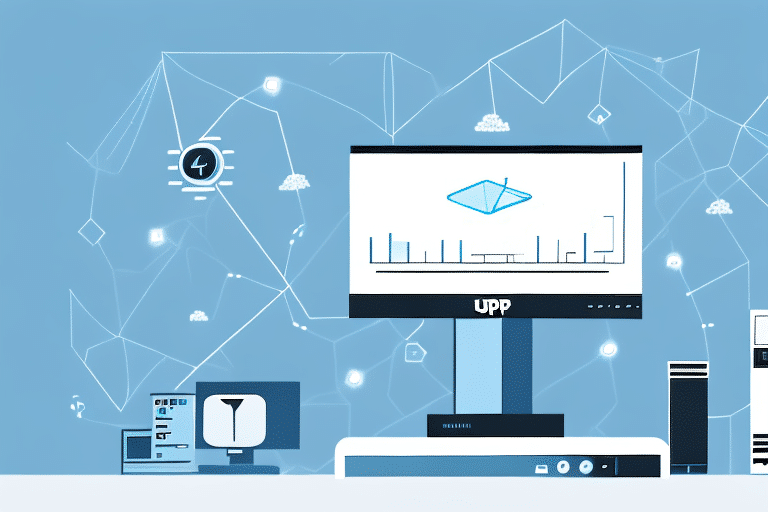How to Connect, Optimize, and Manage UPS for SPS Commerce Fulfillment
Shipping and logistics are critical components of any business, and SPS Commerce Fulfillment is a popular choice for many. To ensure successful and efficient deliveries, it is crucial to connect, optimize, and manage your UPS (Uninterruptible Power Supply) with SPS Commerce Fulfillment. This article delves into the importance of UPS in SPS Commerce Fulfillment, selecting the right UPS, steps to connect your UPS, optimizing your UPS, addressing common challenges, effective management tips, monitoring and troubleshooting, integration benefits, and best practices for UPS maintenance and upkeep. Let’s explore these aspects in detail.
Understanding the Importance of UPS in SPS Commerce Fulfillment
UPS systems play a vital role in SPS Commerce Fulfillment by ensuring the seamless operation of critical processes. Here’s why UPS is essential:
- Uninterrupted Power Supply: UPS ensures that your business operations continue without disruption during power outages, blackouts, or fluctuations, preventing delays and potential revenue loss.
- Equipment Protection: UPS systems protect your hardware from power surges and voltage spikes, which can cause data loss and equipment damage.
- Cost Savings: By preventing downtime and data loss, UPS systems save your business from costly interruptions. Additionally, their energy-efficient design can reduce energy consumption and lower utility bills.
According to the Business News Daily, businesses that implement UPS systems experience significantly fewer disruptions, enhancing overall operational efficiency.
Choosing the Right UPS for Your SPS Commerce Fulfillment Needs
Selecting the appropriate UPS is crucial for meeting your specific fulfillment needs. Consider the following factors:
- Power Capacity: Ensure the UPS can handle the total power demand of your equipment. Calculate the wattage of all connected devices to determine the required capacity.
- Runtime: Assess how long the UPS can provide power during an outage. Longer runtimes are beneficial for maintaining operations until backup generators activate.
- Battery Type: UPS systems typically use lead-acid or lithium-ion batteries. Lead-acid batteries are more affordable but require frequent maintenance, while lithium-ion batteries offer longer lifespans and lower maintenance costs.
- Form Factor: Depending on your space constraints, choose between tower, rack-mounted, or compact UPS units.
For more detailed guidance, refer to the TechRepublic guide on choosing the right UPS.
Steps to Connect Your UPS with SPS Commerce Fulfillment
Connecting your UPS to SPS Commerce Fulfillment involves a systematic approach:
- Power Connection: Ensure the UPS is fully charged and correctly connected to your equipment.
- API Integration: Follow the specific instructions provided by SPS Commerce Fulfillment to connect your UPS via the API. This may vary based on your service provider.
- Configuration: Configure the UPS settings to align with your fulfillment processes, ensuring seamless power management.
- Testing: Conduct thorough testing to verify that the UPS is functioning correctly with the fulfillment system.
If you encounter challenges, consulting with a technical specialist or leveraging NIST guidelines on UPS integration can be beneficial.
Optimizing Your UPS for Maximum Efficiency in SPS Commerce Fulfillment
To maximize the efficiency of your UPS in SPS Commerce Fulfillment, consider the following optimization strategies:
- Proper Configuration: Set up the UPS to handle peak power demands and ensure it switches to battery mode automatically during outages.
- Strategic Placement: Install the UPS in a cool, dry, and well-ventilated area to prevent overheating and ensure optimal performance.
- Regular Monitoring: Continuously monitor the UPS performance using management software to detect and address potential issues promptly.
- Maintenance: Schedule routine maintenance checks, including battery tests and system diagnostics, to maintain UPS reliability.
Implementing these practices can enhance the UPS’s performance, as supported by research from the U.S. Department of Energy.
Common Challenges in Managing UPS for SPS Commerce Fulfillment and How to Overcome Them
Managing UPS systems can present several challenges. Here are common issues and solutions:
1. Battery Failure
Solution: Regularly test and maintain UPS batteries. Replace batteries every three to five years or as recommended by the manufacturer.
2. Software Compatibility Issues
Solution: Keep UPS firmware and software updated to ensure compatibility with SPS Commerce Fulfillment systems. Utilize standard communication protocols.
3. Overloading
Solution: Monitor power usage to prevent exceeding the UPS’s capacity. Implement power management strategies to distribute loads effectively.
Additionally, using surge protectors and voltage regulators can mitigate the risk of power surges and spikes, safeguarding your equipment.
Tips for Effective Management of Your UPS System in SPS Commerce Fulfillment
Effective UPS management ensures reliability and longevity. Here are some tips:
- Dedicated Responsibility: Assign a team or individual to oversee UPS maintenance and monitoring.
- Scheduled Maintenance: Implement regular testing and maintenance routines to identify and address issues proactively.
- Surge Protection: Install surge protectors to shield your equipment from voltage spikes.
- Backup Batteries: Keep spare batteries on hand to minimize downtime during battery replacements.
- Training: Ensure your team is trained to handle UPS systems and respond to potential issues effectively.
Employing these strategies can significantly enhance the management and performance of your UPS system.
How to Monitor and Troubleshoot Your UPS System in SPS Commerce Fulfillment
Continuous monitoring and prompt troubleshooting are essential for maintaining UPS efficiency:
Monitoring
- Use UPS management software to track system performance metrics such as uptime, battery status, and load levels.
- Set up real-time alerts for any anomalies or performance thresholds being breached.
- Regularly review logs and reports to identify patterns or recurring issues.
Troubleshooting
- Address battery warnings by conducting immediate tests and replacing faulty batteries.
- Resolve software issues by updating or reinstalling UPS management tools.
- Mitigate overloading by redistributing power loads or upgrading the UPS capacity.
For comprehensive troubleshooting guidelines, refer to the APC UPS troubleshooting resources.
Benefits of Integrating UPS with SPS Commerce Fulfillment Systems
Integrating UPS with SPS Commerce Fulfillment systems offers multiple advantages:
- Consistent Power Supply: Ensures uninterrupted operations even during power outages.
- Reduced Downtime: Minimizes operational interruptions, maintaining business continuity.
- Improved Efficiency: Optimizes power usage and enhances overall system performance.
- Cost-Effectiveness: Reduces costs associated with power-related disruptions and equipment damage.
- Enhanced Hardware Protection: Safeguards equipment from power fluctuations and surges.
- Real-Time Monitoring: Provides real-time tracking and monitoring capabilities for better inventory and shipment management.
These benefits contribute to a more resilient and efficient fulfillment process, as highlighted by industry studies such as those from Logistics Management.
Best Practices for Maintenance and Upkeep of Your UPS System in SPS Commerce Fulfillment
Adhering to best practices ensures the longevity and optimal performance of your UPS system:
- Regular Testing: Conduct periodic tests to verify UPS functionality and battery health.
- Clean Environment: Maintain a clean, dust-free environment to prevent overheating and ensure proper ventilation.
- Avoid Overloading: Distribute electrical loads evenly and avoid connecting excessive devices to the UPS.
- Software Updates: Keep UPS firmware and management software up to date to leverage the latest features and security improvements.
- Battery Replacement: Replace batteries as recommended to prevent unexpected failures.
- Team Training: Ensure that staff are knowledgeable about UPS operations and maintenance procedures.
Implementing these practices not only extends the life of your UPS system but also enhances overall system reliability and performance.
In conclusion, effectively connecting, optimizing, and managing your UPS for SPS Commerce Fulfillment is essential for ensuring efficient and reliable business operations. By following the outlined steps and best practices, you can safeguard your business against power disruptions, protect your valuable equipment, and maintain seamless fulfillment processes. Regular monitoring, proactive maintenance, and strategic planning will help you achieve maximum UPS performance, ultimately contributing to superior customer satisfaction and business success.
Additionally, it is important to monitor the temperature of your UPS system regularly. High temperatures can damage batteries and reduce their lifespan. Ensure your UPS is installed in a cool, well-ventilated area to prevent overheating. After any power outage or surge, perform a comprehensive system check to confirm that your UPS is functioning correctly and all connected devices remain protected.






















